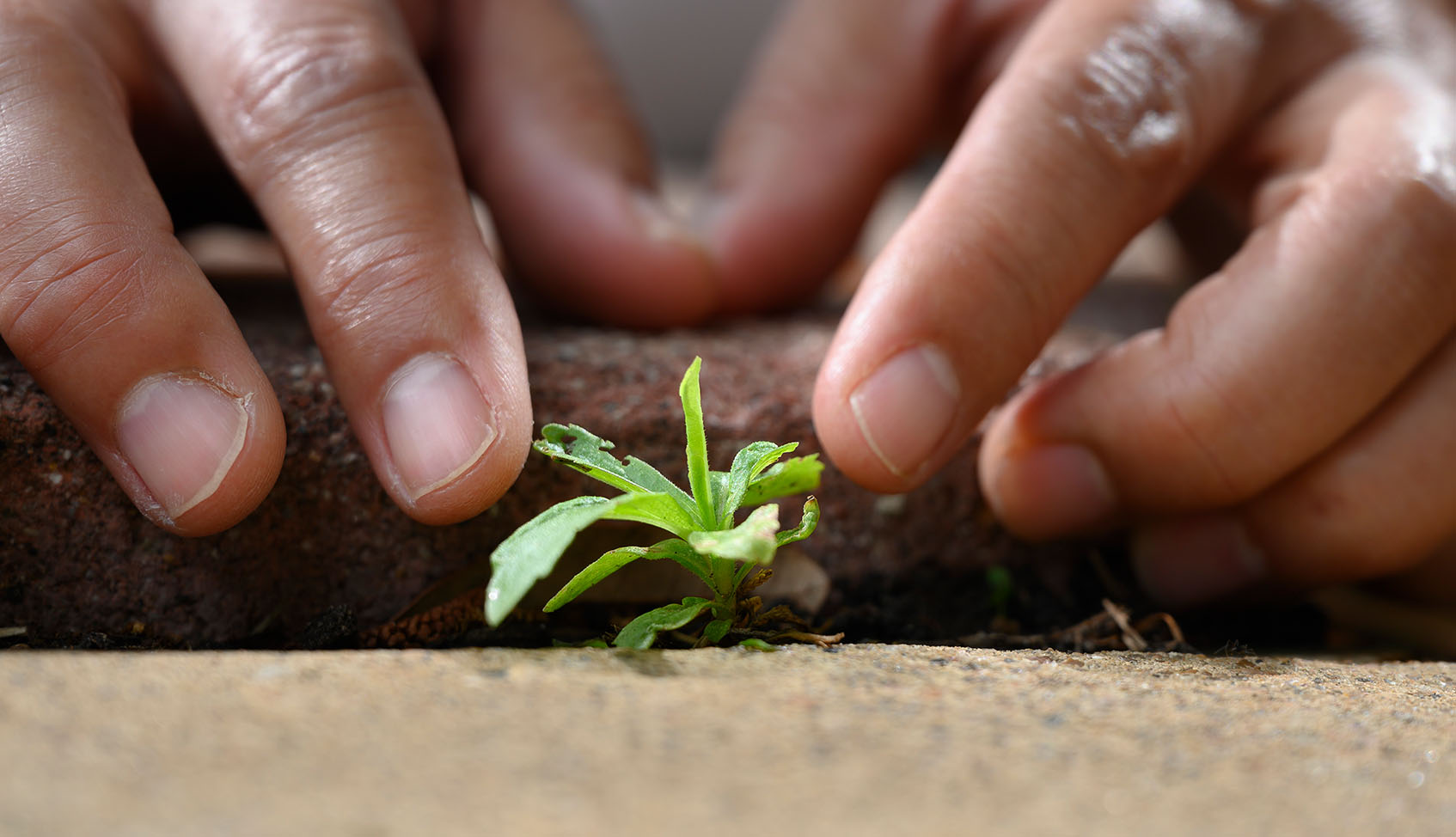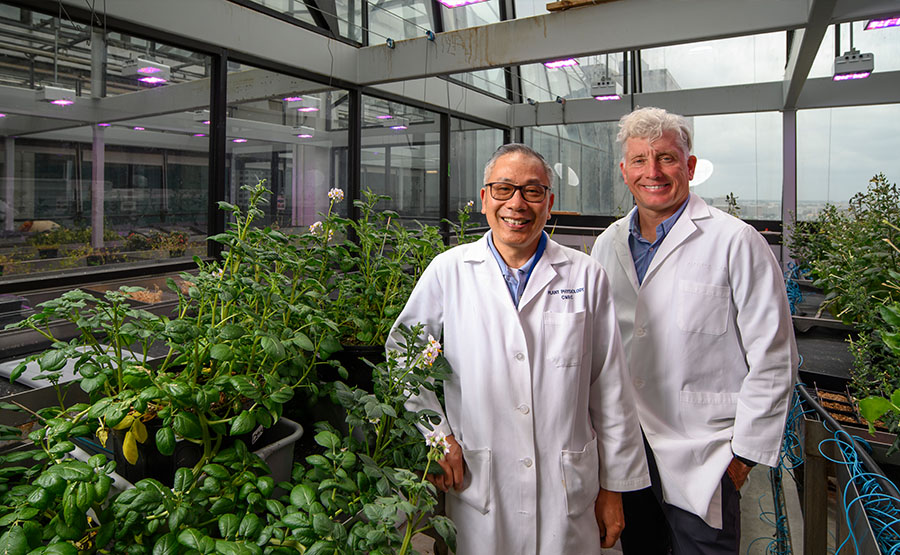

The connection between climate change and growth of crops is clear, but the way in which climate change affects human health is part of a complex cascade of events.
“Climate change is not only rising temperatures, but shifting rainfall patterns as well,” said Peter Hotez, MD, PhD, Dean of the National School of Tropical Medicine and Professor of Pediatrics and Molecular Virology & Microbiology at Baylor College of Medicine and Co-Director of the Texas Children’s Center for Vaccine Development.
Aspects of climate change, such as changing temperature and rainfall, lead to expansion of areas vulnerable to diseases transmitted by insects and animal hosts, such as snails.
The inability of an area to support agriculture forces people to migrate into crowded cities, promoting conflict, destruction of health care facilities, and breakdowns in sanitation and safe water. Respiratory virus infections spread quickly in dense urban areas, and incidence of noncommunicable diseases, such as diabetes and heart disease, rises where food insecurity and poor diets are common.
“Climate change does not act in isolation. It acts in concert with poverty, shifting populations and urbanization,” Dr. Hotez said.
It’s a story about luck, teamwork and perseverance. A happy ending includes a patent awarded in 2021 and future benefits in an uncertain climate.
When he found a previously unknown gene about 10 years ago, Ninghui Cheng, PhD, Assistant Professor of Pediatrics-Nutrition at Baylor College of Medicine, was looking for ways to improve the bioavailable calcium levels in food for children.
Dr. Cheng identified a gene, AtGRXS17, which not only enhances the calcium accumulation, but also directs the production of a protein that can regulate plant response to temperature. Plants with this gene expressed at high levels continued to grow in higher than normal temperatures, while the same types of plants without this gene “turned up” wilted.
“We’re interested in how plants respond to stresses,” said Kendal Hirschi, PhD, Professor of Pediatrics and Human & Molecular Genetics at Baylor and Associate Director of Research at the Vegetable and Fruit Improvement Center at Texas A&M University.
“Plants can’t move out of the soil. They have to fight the battles as they come to them. We’re interested in big questions like: how do they respond to wind, touch, pathogen attack and salty soils?” Dr. Hirschi said.
Initially, research on AtGRXS17 used only Arabidopsis, a small, flowering weed that grows easily in rocky, sandy soil; in cracks in the sidewalk; or indoors in a small space. The plant is widely used for genetic research because it has a relatively small genome (set of genetic instructions), and it makes seeds quickly.
But Arabidopsis is not an agricultural plant. So, Dr. Hirschi enlisted long-time collaborator Sunghun Park, PhD, Professor of Crop Functional Genomics at Kansas State University, where Dr. Park has the space to grow fields of such familiar crops as tomatoes and corn. Dr. Park and his team are named on the patent, along with Dr. Hirschi and Dr. Cheng.
 Ningui Cheng, PhD, left, and Kendal Hirschi, PhD, patented a plant gene that may reduce effects of climate change on food production and human health. In the rooftop greenhouse of the Children’s Nutrition Research Center, they grow plants for study.
Ningui Cheng, PhD, left, and Kendal Hirschi, PhD, patented a plant gene that may reduce effects of climate change on food production and human health. In the rooftop greenhouse of the Children’s Nutrition Research Center, they grow plants for study.
“He’s expressed our gene in tomato, corn and a couple of other plants. Every time he expresses it in those plants, boom! They’re heat tolerant. The heat tolerance is so robust, it’s like it has some kind of protective shield,” Dr. Hirschi said.
With the gene, the tomato plants also resisted cold temperatures, and rice plants resisted drought.
“It’s like the protein that the gene induces is kind of a super protein. We are thinking, what is the protein doing to give the plants more super power to endure environmental change?” Dr. Cheng said.
Because of public reluctance to accept genetically modified foods, the scientists hope that if they can understand more about the protective mechanism, they may be able to develop protection without genetic engineering.
Dr. Hirschi points to the adaptation of corn to changing environments — without genetic engineering — in the 9,000 years since corn was first domesticated in the cool temperatures of Mexico’s high hills. Now corn grows in Kansas, where summer days are 95 degrees. The scientists would like to speed up that type of adaptation.
Research plans for the AtGRXS17 gene, which produces the super protein, call for growing new plants and testing them on animals first and eventually on human volunteers.
The lab is part of the Children’s Nutrition Research Center (CNRC), which houses research labs, state of the art equipment, a greenhouse, a metabolic kitchen, and observation rooms and accommodations for volunteers. The CNRC is a joint facility of Baylor, Texas Children’s Hospital and the U.S. Department of Agriculture/Agricultural Research Service.
“The growing problem of food insecurity already affects the most vulnerable populations, with those at greatest risk being mothers and their children across the world. It’s not just about improving production in the United States, but throughout the world,” Dr. Hirschi said.
Globally, as many as 811 million people go hungry now, and malnutrition contributes to nearly half of all deaths in children under the age of 5, according to the United Nations Division for Sustainable Development Goals and the World Health Organization. Climate change exacerbates the problems.
“As temperatures go up globally, production goes down. You need to come up with new ways to mitigate the adverse effects of climate change, to increase yield as the climate becomes more uncertain,” Dr. Hirschi said.
Finding methods to grow more food, as well as more nutritious food, are ways that the Hirschi lab is contributing to relieving world hunger in spite of a changing climate.